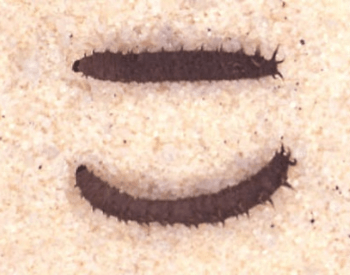
- Kingdom: Animalia
- Phylum: Arthropoda
- Class: Hexapoda
- Order: Diptera
- Family: Bibionidae
- Genus: Plecia
- Species: Plecia nearctica
15 Lovebug Facts for Kids
- The lovebug is a march fly insect that is a member of the Plecia genus.
- Lovebugs are also called double-headed bugs, honeymoon flies, kissybug and telephone bug.
- The binominal name for a lovebug is Plecia nearctica.
- The lovebug was first described by American entomologist Dilbert Elmo Hardy in 1940.
- A lovebug is black, with a hint of red right behind its head.
- You can find lovebugs in the southeastern United States and in some areas of Central America.
- Lovebugs are herbivores, and they only eat vegetation.
- Adult lovebugs eat nectar from several different plants, and young lovebugs (larva) eat decaying vegetation.
- Lovebugs live between 135 and 260 days, with most of their lifespan spent as larva.
- An adult female lovebug can live for up to seven days, an adult male lovebug can live up to five days. On average, the adult lifespan of lovebugs is between three and four days.
- A swarm of lovebugs can reach into the millions, and there are two major swarms of lovebugs each year, in May and then September, and they last between four and five weeks.
- A female lovebug can lay up to 350 eggs, and they are typically laid in decaying vegetation.
- While lovebugs can be annoying, they do not sting, bite or transmit diseases.
- Adult lovebugs can damage car paint due to their acidic body chemistry, however as larva they are beneficial because they eat decaying vegetation.
- A common myth is the lovebug was created by the University of Florida during a failed genetics experiment. They migrated from Central America and reached the Florida Panhandle in 1949.
Lovebug Pictures

A picture of a swarm of love bugs..Credit: James Castner / University of Florida

An up-close picture of two love bug larva..Credit: James Castner / University of Florida

A picture of two love bugs mating on a leaf.Credit: Andreas Kay
Additional Resources on Lovebugs
- The Lovebug – Learn how to indentify a lovebug on the insect indentification website.
- Lovebug – Plecia nearctica – Explore the University of Florida web page on lovebugs to learn more about this insect.
- Lovebug (Plecia nearctica) – Wikipedia – Discover more facts about lovebugs on the Wikipedia website.
